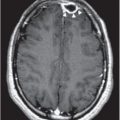| Hyalohyphomycoses Long septate hyphae in tissue Fusarium Penicillium marneffei Scedosporium |
| Phaeohyphomycoses (Dematiaceae) Short septate hyphae, pseudohyphae, and/or yeast with melanin in cell walls Alternaria Bipolaris Cladosporium (cladophialophora) Curvularia Dactylaria Exophiala Exserohilum Fonsecaea Phialophora Rhinocladiella Wangiella |
| Yeast or yeast-like fungi Pichia (Hansenula) Malassezia (Pityrosporum) furfur: Yeast only in deep tissue; “spaghetti and meatball” in stratum corneum (tinea versicolor) Rhodotorula: “red yeast” Saccharomyces cerevisiae Trichosporon beigelii |
| Protothecosis Achlorophyllic unicellular algae produce spherical cells that multiply by cytoplasmic cleavage, forming a morula in tissue Prototheca wickerhamii Prototheca zopfii |
Virtually all of these species grow readily at 25°C to 30°C (77°F to 86°F). Most of these opportunistic fungi can be identified to genus in a clinical microbiology laboratory. However, a mycology expert is usually needed to identify the species. Fortunately, treatment of all species within a genus is frequently the same. Reliable intradermal or serologic tests are not available and direct microscopy using Gram stain, potassium hydroxide, India ink, and Papanicolaou preparations of lesion scrapings and sputum are often not helpful.
Species-specific PCR is presently available for pathogens such as Aspergillus. A lack of standardization has limited its acceptance as a diagnostic tool. PCR offers the possibility for broad-range identification while maintaining sensitivity. However, PCR does not establish pathogenicity of the identified organism.
Therapy
Treatment of these infections can be challenging. Total excision, whenever feasible, should accompany any treatment regimen. There are no solid data on optimal drug therapy for many fungal infections because of the lack of controlled randomized trials. It is unlikely that anyone could ever collect enough cases to conduct double-blind therapeutic trials. At present, susceptibility testing can be performed for Aspergillus, Candida, and Cryptococcus neoformans, which most commonly produce disease in immunocompromised patients. Antifungal susceptibility testing is still in its infancy and variations in susceptibility occur with these organisms just as they do with bacteria. There are few data about in vitro correlation to in vivo results. When these fungi are isolated, they should be sent to a reference laboratory for susceptibility testing, including synergy studies.
Responses to antifungal drugs fail for multiple reasons: (1) the drug has no in vitro activity; (2) neutropenia was not reversed; (3) oral itraconazole or posaconazole was given while fasting or with antacids; (4) adequate blood levels were not obtained; (5) the dosage was too low or combination therapy was not used; (6) the drug is fungistatic rather than fungicidal; and (7) the drug is unable to concentrate in the area of concern, such as the brain. Voriconazole, itraconazole, and posaconazole trough levels must be monitored to ensure that therapeutic blood levels are achieved. Liposomal formulations of amphotericin B allow much higher dosages without increasing toxicity (Table 181.2). The echinocandins are rarely active in vitro against these miscellaneous fungi and algae.
| Pathogen | Characteristics | Diagnosis | Therapy |
|---|---|---|---|
| Hyalophyphomycoses – long septate hyphae in tissue | |||
| Fusarium species | Purpuric skin lesions with central necrosis, keratitis, pulmonary disease | Blood cultures: (50% positive) Histopathology: similar to Aspergillus | Reversal of neutropenia (G-CSF, GM-CSF) aLAmB + bVoriconazole (can switch to 200 mg q12h when stable) |
| Penicillium marneffei | |||






